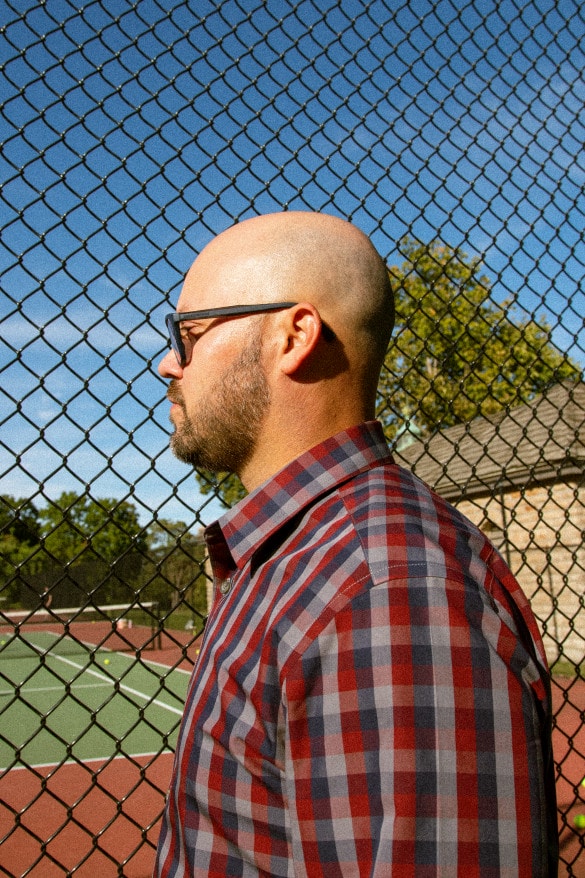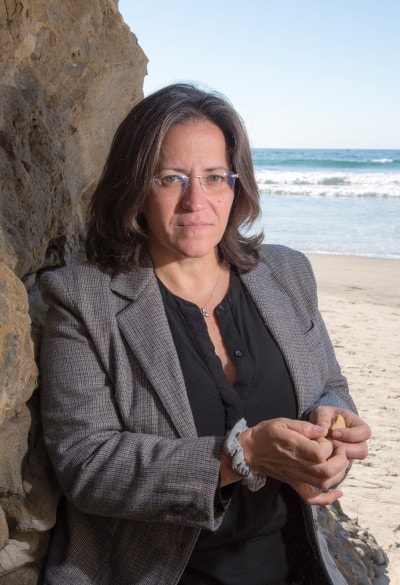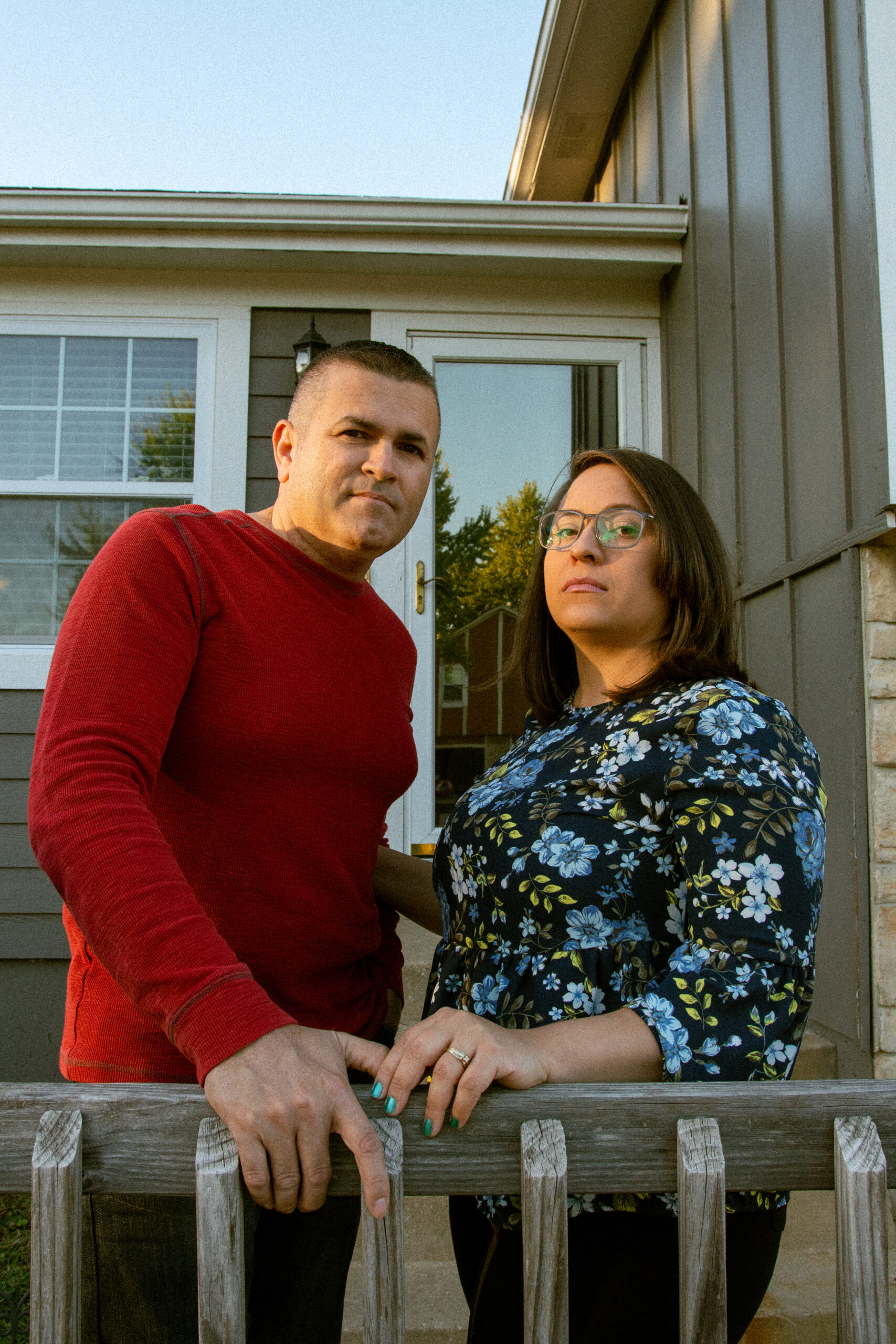Lights Out: Puerto Ricans in KC Are ‘Tired,’ ‘Enraged’ Absorbing Another Hurricane
Published October 5th, 2022 at 6:00 AM
“Yo no me quiero ir de aquí / Esta es mi playa / esta es mi sol / esta es mi tierra / esta soy yo” // Translation: “I don’t want to leave this place / this is my beach / this is my sun / this is my land / this is me”
— Bad Bunny, El Apagón
Jose Martí points to a red pop-up wagon holding a rechargeable battery and generator. Right now, it’s powering up the DJ’s speakers.
“This is what families in Puerto Rico are using to power their houses,” says Martí, president of the Puerto Rican Society of Greater Kansas City.
It’s a stark contrast to how these gadgets are normally used.

On the island 2,209 miles away, it keeps electricity and stoves running. In Kansas City, it amplifies songs like “Pa Romperla Discotequa” by Farruko, followed by “Todo Tiene Su Final” by Hector Lavoe.
Friends, families and children play, and some couples dance, many wearing bedazzled Puerto Rican hats and baseball jerseys. Folks line up for barbecue-slathered pork and chicken pinchos, or skewers, that sizzle on the grill. Others chow down on guava puff pastries.
Next up, a raffle for a French Press with cafecito puertorriqueño.
It’s Pasadia Boricua, a day for local Puerto Ricans to congregate. Just a week prior, Hurricane Fiona barreled through the island.
Boricuas who made a life in Kansas City speak lovingly of their home island that, five years after Hurricane Maria, is in ruin again.
Martí, an electrical engineer by trade, isn’t shy. He’s airing his frustration with how recovery efforts have unfolded.
“We’re tired,” Martí says, then points to a podcaster who “says it best.”

In the video, the podcaster asserts his disappointment in elected leaders.
“Es terrible,” says Jorge Pabón, host of MoluskoTV. “Realmente lo que estamos vivendo en Puerto Rico es el verdadero caos.” Translation: “It’s terrible. Truly, what we’re living in Puerto Rico is legitimate chaos.”
Pabón is infuriated. How is it possible that, five years after Hurricane Maria, the governor’s office didn’t learn and didn’t prepare?
Recurring power outages have hurt islanders still patching together what recent earthquakes damaged and what Hurricane Maria left behind five years ago.
The podcaster’s pleas echo Martí’s sentiments.
But they aren’t asking for pity. They want solutions. Real ones.
Crumbling bridges and repeated power outages are symptomatic of a larger infrastructure and government issue.
“We’ve been dealing with (these) systems forever,” Martí says, recalling the home he left behind in 2007.
He never intended on leaving forever but the opportunities for electrical engineers were in the U.S. Since he left, he got married and had two children.
Martí says building a sustainable life in his homeland would be nearly impossible. However, he feels one part of the rebuilding narrative often goes overlooked.
For years, Puerto Rico has struggled to find its footing. Repeated natural disasters like earthquakes in the south followed by Hurricanes Irma, Maria and Fiona have made it more difficult to recover. Then there are corrupt government leaders, he added.
“Of course, one of the other pieces that ties into everything, but no one was talking about it … is that this is related to climate change,” he adds.
‘Compounding Crisis’
The Environmental Protection Agency has been tracking climate change’s impact on the island. Storms on the island have worsened in recent decades, according to the EPA’s 2016 report, and they will get worse.
Six years ago, the agency predicted worsening wind speed and more rainfall.
That’s what we saw with the past several hurricanes, says Isabel Rivera-Collazo, assistant professor of anthropology at the University of California-San Diego. Rivera-Collazo is also from the island and moved to the mainland six years ago.
She’s lived through other hurricanes, earthquakes and witnessed the devastating effects of lack of governance.
“There is a problem of compounding crisis,” she says.

The archaeology professor’s work focuses on social vulnerability to climate and environment change. She works closely with Borikua and Taino, Puerto Rican indigenous communities.
And just in the past two weeks, students have shared that their families living in rural areas of Puerto Rico are neglected. One student’s grandmother was desperate for water but didn’t know where to turn. Rivera-Collazo was able to help but she insists it shouldn’t be like this.
Historically and presently, these rural residents suffer from a scarcity of resources.
“It wasn’t the storm,” Rivera-Collazo said. “This is a social disaster that is triggered by the inability of what should be the … social infrastructure for disaster response.”
Many of the issues present today are exacerbated by previous incidents that were left to fester.
The island’s government leaders based in the most populous city, San Juan, ignore the needs of disadvantaged communities and those in more rural areas, she explained. Then when U.S. federal government programs swoop in, they don’t understand the locals.
“(They’re) trying to just impose these external solutions that are not relevant to our island,” Rivera-Collaza added. “There is reason for outrage.”
Many of the Federal Emergency Management Agency (FEMA) response providers are ill-equipped to navigate the hilly Caribbean terrain, much less interact with folks in crisis. Cultural competency is key in disaster situations.
For instance, Martí says some companies dispatch employees who cannot speak Spanish, adding yet another barrier.
That cropped up in the Commission on Civil Rights and Protections FEMA Statutory Report: “FEMA did not have enough Spanish-speaking employees to accommodate the Island, leading to delays in aid and assistance. Even after documents had been translated into Spanish, they were often inaccurate and confusing.”
They also pointed to how quickly help was sent to Texas in the wake of Hurricane Harvey compared to Puerto Rico, which is a U.S. territory, following Hurricane Maria. This has added more pressure to see how President Biden’s administration has responded to the recent hurricanes.
In a press briefing, Biden addressed both recent hurricanes, but had this to say to Puerto Ricans:
“Yes, Puerto Rico is a strong place, and Puerto Ricans are strong people. But even so, you have had to bear so much and more than need be, and you haven’t gotten the help in a timely way.”
‘Qué Diferencia’
On the other hand, some islanders who’ve landed in landlocked Kansas City see the mainland as a second chance.
That’s the case for former Puerto Rico police officers Jeraida Pantoja Piccard and Edwinel Vélez Albino. Piccard and Albino met at the academy, married in 2013 and had a child a year later.


Their lives were upended during the last storm and they remembered it like it was yesterday. They’d been on vacation in 2017 when both were called back to work.
The wind blew. Power shut down. Then, radio silence.
Their 3-year-old daughter at the time and parents were at home, but they had no way of notifying them of their status. So they spent four days without access to showers, still in their uniform, and had a handful of whatever snacks were lying around for sustenance.
“Es bastante difícil. Y a la misma vez, en mi caso, preocupada por la nena,” Picard said. “Yo no sabía si ella estaba viva, si en mi casa había ocurrido algo.” Translation: “It’s so difficult. At the same time, in my case, I was worried about my little girl. I didn’t know if she was alive, or if something bad had happened at my house.”
From their point of view, folks have forgotten how the 2017 hurricane destabilized the island. As officers, they were told to remain at their headquarters should an emergency arise.
They were stuck and separate. Piccard at her station and Albino at his.
She worked at the Policía Municipal de San Juan P.R., which covers only the San Juan area. He worked at the Policía de Puerto Rico, which covers the whole commonwealth.
Once the storm subsided, what they saw astounded them.
“Cuando salimos todo era, como si fuera un desierto,” Piccard says. “Lo árboles todo … perdieron sus hojas.” Translation: “When we stepped outside, everything was like a desert. The trees, all of them, had lost their leaves.”
Her husband nodded. It was like a scene out of an apocalyptic movie, or like an atomic bomb had hit, he said in Spanish.
“Eso parecía una película apocalíptica,” he said. “Parecía como si hubiera caído una bomba atómica. Así se veía todo.” Translation: “It looked like an apocalyptic movie. Like an atomic bomb had hit.”
Tag-teaming, they recalled coming across a 100-year-old tree in Rio Piedras that had been pulled up, roots and all. This was the result of Hurricane Irma. Their community would be devastated once more.
It came to a head when Albino’s grandfather died the day Hurricane Maria hit. The hospital had lost power. His grandfather required Dialysis they could not provide.
“Muchos murieron,” Albino recounted. “Muchas personas porque no pudieron darse diálisis y él (mi abuelo) fue uno de ellos.” Translation: “So many people died. Many because they couldn’t get dialysis and my grandpa was one of them.”
The crumbling infrastructure post-disaster was just one part of what prompted them to move. For one, Albino had paid into his retirement account only to notice those funds were depleted. He’s still waiting on the government to return the $15,000.
Still, they smile. They started a small business of handmade soaps and feel secure in their future.
From where they sit, in their newly-purchased home in Olathe, now’s the time to put pressure on leaders and companies like LUMA to step up.
What they experienced during Hurricanes Irma and Maria didn’t need to be the case for the folks living on the island two weeks ago. They still pine for their isla del encanto. Looking back on it today, they realized they — like the many residents in Puerto Rico today — lacked basic necessities such as air conditioning, reliable electricity and a good career.
“Ahora nosotros estamos aquí y decimos, ‘Wow, qué diferencia!’” Picard says. “Es triste porque nosotros amamos nuestra isla, pero tener que llegar acá para tener una mejor calidad de vida cuando nosotros hubiéramos deseado estar allá.” Translation: “Now we’re here and say, ‘Wow, what a difference!’ It’s sad because we love our island but to arrive in the U.S. to obtain a better quality of life when we’d much rather be over there.”
Lessons Learned
Monetary support isn’t necessarily the problem, say some Puerto Ricans.
In fact, some critics have pointed to the mismanagement of billions in funds and resources from FEMA’s 2017 response. Others point to mismatched contracts — case and point LUMA Energy — with outside companies who don’t know the land or the people.
“No electric infrastructure can withstand a direct hit from a major hurricane without major damage. This is the case in Florida, South Carolina, and Eastern Canada, which were each hit by recent hurricanes – and where power may not be restored in some areas for weeks or months,” says LUMA’s Energy spokespeople in an email. “LUMA remains focused on restoring power to all of our customers and responding to the devastation of Hurricane Fiona.”
Marti, as an engineer and Puerto Rico native, wants to see the government take steps to really help the island get back on its feet. But it takes intention, a more nuanced understanding of the Puerto Rican infrastructure and listening to people’s needs.
Rebuilding Puerto Rico needs to take into account how people live.
One example is FEMA’s disaster assistance platform, which overlooks some residents’ ability to navigate the government site, and call or download a form online. Power outages across the island and folks without access to a computer get lost in the mix.
Second, is the issue of property ownership.
“When you put that in context, there are a couple of things that you can do. The government could help legalize their location,” Martí explained. “(FEMA) could say, ‘Hey, we’re gonna give you the title so you can get money to rebuild, but you cannot stay here.’”
Displacement and gentrification have been another large issue for locals. It was part of a report and music video combo produced by journalist Bianca Graulau and Bad Bunny.
Rivera-Collazo explains that all of these issues are complex and interconnected.
For many islanders, homes are passed down from generation to generation. But FEMA has been requiring that damaged homes be demolished. They’ll build new homes on that land, but they’re small – two-bedroom tiny homes, she says.
So disaster survivors are forced to contend with losing their home, as well as cultural heritage and access to community while navigating the haze of another Category 5 storm.
“You know, it’s very exhausting,” she said. “We are having an issue with land ownership because of our traditional ways of life.
“You might be living in the house that was your parents and your grandparents and your great grandparents. But there’s no title, so if you build a new house, who’s gonna pay the taxes?”
In early October, President Biden announced he was setting aside $60 million to help rebuild the island. This announcement follows a new Axios report that showed millions allocated for Hurricane Maria five years ago were misused.
Folks interviewed by Flatland all had stories of people who didn’t receive their funds, many of whom were in dire need of help.
Critics suspect fraud, according to Axios.
The Homeland Security audit conceded that FEMA operated inefficiently, and didn’t properly account for advanced funds, employees and more. These issues weren’t new, as had been reported before, but underscored a larger issue of how disaster response teams operate.
For puertorriqueños who have planted roots in Kansas City, their plea now is for the leaders to listen. No more photo ops of handing water out to select communities in easily accessible areas.
Their ask of community leaders is to keep placing pressure on those in power.
“Let’s try to get Puerto Rico on the right track,” Martí said. “ … It’s about time for good government.”
Vicky Diaz-Camacho covers community affairs for Kansas City PBS.
Update: LUMA Energy ServCo’s comments have been added.


